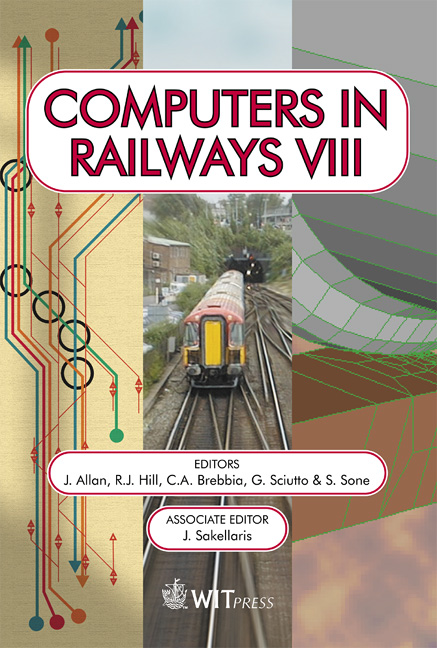Trackwork Innovation --- Non-ballasted Track In Taiwan
Price
Free (open access)
Transaction
Volume
61
Pages
14
Published
2002
Size
800 kb
Paper DOI
10.2495/CR020571
Copyright
WIT Press
Author(s)
Kuo H Cheng, Relon J T Chen, Sy. Chang & Kai-Chieh Chia
Abstract
Due to its high capacity, low energy consumption, comfort and punctuality, the railway system has become the main stream of inland transportation in the world. And now accordingly with the results of recent studies and research, it has become clear that in the future the ballast track railway system will eventually be replaced by the non-ballast track railway system. In Taiwan, the subject of mass rapid transit non-ballast track systems has been studied in the practical field for many years now. This particular study presents a simulation of actual cases of operation on a bridge of the Taipei Rapid Transit System (TRTS), and includes the measurements and analysis of in-track loading, the measurements and analysis of track system noise and vibrations, and the EMU and Direct Fixation rail Fastener (DFF) natural frequency and insert loss. The results were examined in order to establish the direct fixation rail fastener testing procedure, determine the functional requirements for setting on non-ballast trackbed, and develop a trackbed system evaluation process. In this paper, we are sharing our experiences and study results for both the design stage and operation stage. Each stage has its own unique characteristics for the designer’s reference, and can help enable the designer to make revisions that will suit the actual conditions. It is our hope that this non-ballast track research will enhance the future development of non-ballast track systems.
Keywords





